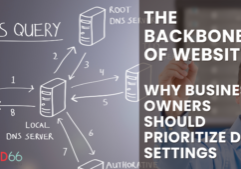Google Analytics 4: What It Is and How to Migrate From Universal Analytics
Google Analytics 4 (also known as GA4) is what Google is calling the “next generation of Analytics.” If your business had Google Analytics set up in the past, it’s likely the Universal Analytics (UA) property, which rolled out in 2013 as the standard for tracking website traffic, conversions, and more.
However, in an ever-changing digital world, Google announced in late 2020 that it was rolling out a new standard for tracking: Google Analytics 4. Below, we break down the key pieces of GA4, what it means for your business, and why you should migrate your property sooner than later.
What is GA4?
GA4 is a new property in Analytics designed for better, more effective measurement. The main goal of Google’s switch to GA4 is to move from using session-based data (like UA) to an event-based data model.
But why is this important? And what is session-based and event-based data?
Session-Based Data vs Event-Based Data
In UA, session-based data groups user interactions with your website that take place within a given time frame. A single user on a site can have multiple sessions depending on when they visit the site. They can have different purchases completed on different days, different browsing devices they’re using, etc. The list goes on and on.
Each and every user is unique. Likewise, each and every company is unique, especially when it comes to the ways in which they use the data collected via Google Analytics. So, a “one-size-fits-all” model like session-based data is no longer a great solution for businesses, which is why Google is moving away from this model.
However, event-based data, on the other hand, tracks the particular actions website users take. By focusing on specific actions (i.e. “events”) users are taking, businesses can better understand the customer journey, which allows for more profound data and insights into user behavior. User-centric analytics, like GA4, are the future of reporting for businesses and marketers.
According to Google, some of the key updates GA4 provides include:
- Collecting both website and app data to better understand the customer journey
- Event-based data instead of session-based
- Privacy controls such as cookieless measurement, and behavioral and conversion modeling
- Predictive capabilities offer guidance without complex models
- Direct integrations to media platforms to help drive actions to your website or app
What Does The Switch to GA4 Mean For Your Business?
On July 1, 2023, standard Universal Analytics properties will stop processing new hits on your website. It’s likely that if you haven’t heard of or switched to GA4 yet, that your current Google Analytics’ properties are standard Universal Analytics properties.
To ensure continued collecting of data via Google Analytics, migrating to GA4 before July 1, 2023 is absolutely necessary.
How to Set Up Google Analytics 4
1. Identify Your Current Google Analytics Properties
You can do this by logging in to your Google Analytics account and clicking on your account name in the top left corner of the screen. You should see sections show up for Analytics Accounts, Properties & Apps, and Views.
Under Properties & Apps, you’ll see a number under your website URL. If it starts with UA-... then you have a Universal Analytics property (which is the model Google Analytics is moving away from). New GA4 properties do not have UA- in front of the Google ID number.
2. Create a New GA4 Property
If you already have a Universal Analytics property set up, there’s a simple way to create a new GA4 property via Google’s GA4 Setup Assistant. You can view the steps via this Google Support article.
3. Install The Google Tag on Your Website
As you go through the steps outlined in the Google Support article above, you’ll see in step six that Analytics may be able to reuse your existing Universal Analytics tag for your GA4 property. This means that Analytics will create a connected site tag between your Universal Analytics and GA4 property.
If this is the case, then you do not need to install a new tag on your website and you can move on to confirming that the data is streaming to your GA4 property.
If Analytics cannot reuse your existing Universal Analytics tag, you will need to install a new tag associated with GA4 on your website. Depending on how your website is set up, there are a few ways to do this.
The most common way is installing the tag manually in the <head> element of your website. Step seven of this Google Support article walks through how to generate your new tag and more.
4. Confirm The Data is Streaming to Your GA4 Property
Once your GA4 property tag is installed or connected to your website, you can confirm the data is streaming to your GA4 property by navigating back to the home dashboard of your GA4 property.
If the data is streaming, you’ll see a confirmation message at the top of the home page. Please note: it can take up to 30 minutes for data to begin appearing in your new GA4 property.
Migrating to GA4 Isn’t Rocket Science, But It Can Feel Like It
As a full-service marketing agency, we’ve already set up GA4 properties for our clients to ensure we have months of valuable data before the switch on July 1, 2023.
If your business needs help with converting to GA4 and pursuing measurable results, feel free to reach out to us today!










